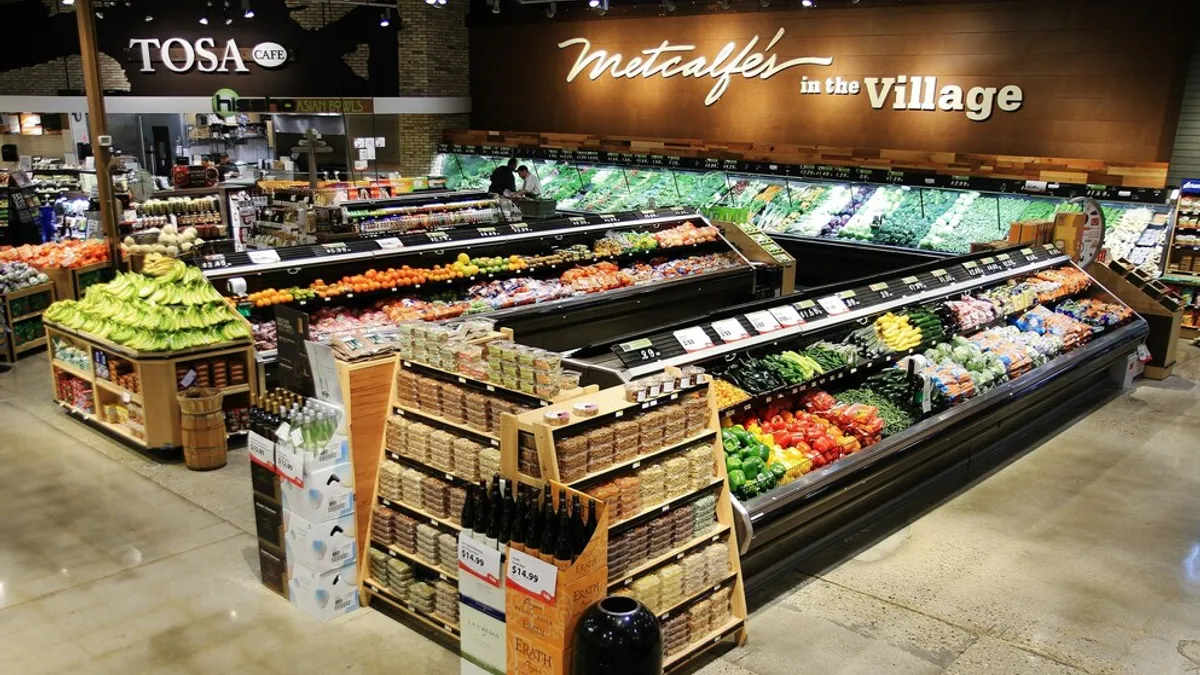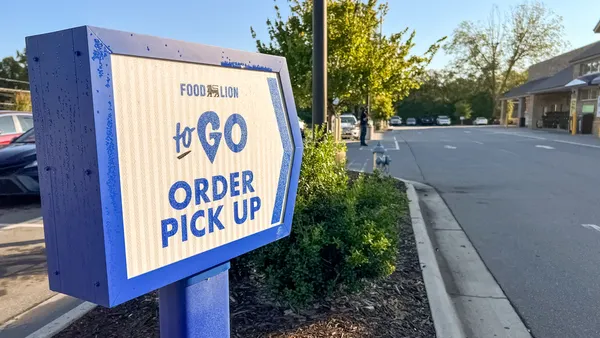Dive Brief:
- The U.S. online grocery segment reached $9.6 billion in monthly sales in November, a 17.8% increase compared to the year prior, according to data released Tuesday by Brick Meets Click and Mercatus.
- All three fulfillment methods saw year-over-year sales growth with pickup accounting for more than 41% of all e-grocery sales.
- Supermarkets caught a break last month even as they continue to struggle to compete against mass and discount retailers.
Dive Insight:
November marked a record-making month for grocery e-commerce, highlighting consumers’ continued reliance on online channels for their food shopping. Last month’s monthly active user base for all three e-commerce methods reached near-record highs, increasing 15% — the second-strongest year-over-year percentage change since August 2021, according to Brick Meet Click and Mercatus.
The month also saw an all-time high of 77.8 million households purchasing groceries online, exceeding the previous record high set in April 2020, the first full month of the COVID-19 pandemic, the firms noted. November also saw 72% of overall monthly active users rely on just one fulfillment method, up 4% compared to 2023.
November’s results were driven by an expansion of the monthly active user base as order frequency rates rose and overall spending per order remained the same compared to last year.
For much of 2024, delivery served as the powerhouse for e-grocery sales — and that trend continued in November. Delivery sales jumped up $3.9 billion, a 22% year-over-year increase, and accounted for 40.6% of grocery e-commerce sales.
Pickup ended the month with 41.3% of total e-grocery sales, surpassing delivery, and recorded $3.9 billion in sales, an 8% year-over-year increase. The segment’s growth was driven by volume gains despite a slight drop in average order frequency, which fell nearly 5% compared to the year prior. The drop in order frequency is mainly linked to a pullback by the youngest household group, aged 18 to 29, according to Brick Meets Click and Mercatus.
Ship-to-home recorded $1.7 billion in sales last month, up more than 30% year over year. Of all the fulfillment methods, ship-to-home grew at the fastest pace due to an increase in order frequency and rapid monthly active user growth.
Traditional grocers have long been under pressure from mass and dollar retailers, such as Walmart, as they compete for consumers’ e-grocery dollars. But November proved to be a solid month for supermarkets, as they made inroads with shoppers who depend on them as their primary source of groceries.
“Supermarkets experienced a significant surge in their MAU base, benefiting from widespread and deep discounts on membership and subscription programs offered by both national and regional grocers throughout November,” David Bishop, a partner at Brick Meets Click, said in a statement. noting that traditional grocers will have to continue working to retain customers and grow share-of-wallet with them.
While mass retailers reported strong gains in order frequency across all three fulfillment methods, the combined average order value for pickup and delivery dropped slightly last month.














